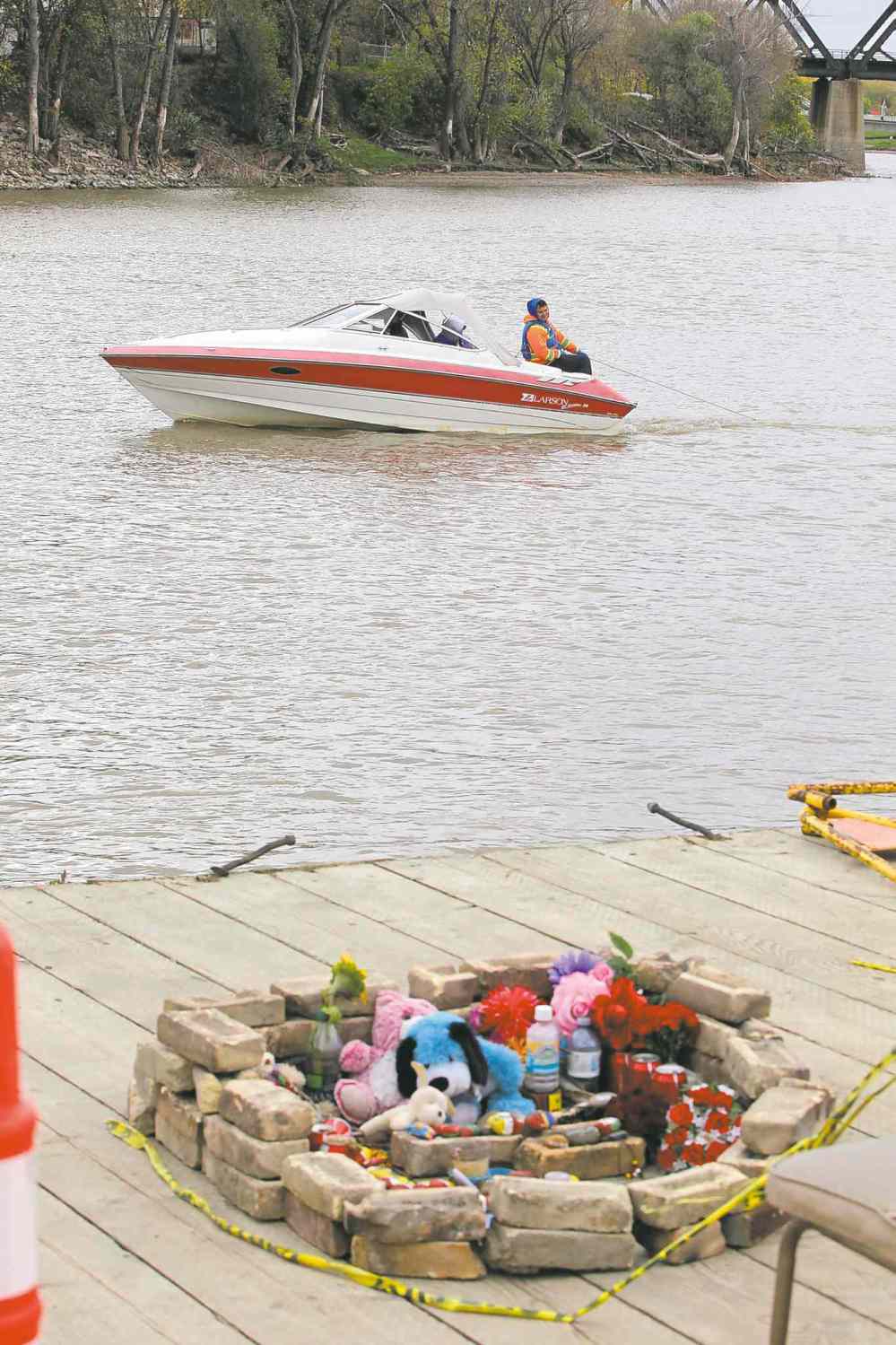Police warn of long odds of finding anyone through river search
Like seeking needle in haystack: expert
Advertisement
Read this article for free:
or
Already have an account? Log in here »
To continue reading, please subscribe:
Monthly Digital Subscription
$1 per week for 24 weeks*
- Enjoy unlimited reading on winnipegfreepress.com
- Read the E-Edition, our digital replica newspaper
- Access News Break, our award-winning app
- Play interactive puzzles
*Billed as $4.00 plus GST every four weeks. After 24 weeks, price increases to the regular rate of $19.00 plus GST every four weeks. Offer available to new and qualified returning subscribers only. Cancel any time.
Monthly Digital Subscription
$4.75/week*
- Enjoy unlimited reading on winnipegfreepress.com
- Read the E-Edition, our digital replica newspaper
- Access News Break, our award-winning app
- Play interactive puzzles
*Billed as $19 plus GST every four weeks. Cancel any time.
To continue reading, please subscribe:
Add Free Press access to your Brandon Sun subscription for only an additional
$1 for the first 4 weeks*
*Your next subscription payment will increase by $1.00 and you will be charged $16.99 plus GST for four weeks. After four weeks, your payment will increase to $23.99 plus GST every four weeks.
Read unlimited articles for free today:
or
Already have an account? Log in here »
Hey there, time traveller!
This article was published 08/04/2015 (3846 days ago), so information in it may no longer be current.
The renewed effort to search the Red River for the bodies of indigenous women is being tempered by a warning about the “astronomical odds” against locating human remains by using a dredge.
For the second consecutive year, a group of volunteers plans to drag the bottom of the Red River for the remains of missing or murdered indigenous women and girls. In 2014, the volunteers deployed dragging bars from boats after the body of 15-year-old Tina Fontaine was recovered on the riverbank.
Bernadette Smith, who initiated the dredging effort, said although the volunteers did not discover any bodies last year, she believes their actions may have dislodged remains discovered on the shore or floating in the river.
She said she would like to see the Winnipeg Police Service assist the volunteer effort in a manner that goes beyond the technical advice the police offered and the safety monitoring they conducted in 2014.
“They had four guys sitting in a boat,” said Smith, whose sister, Claudette Osborne, went missing seven years ago. “We would have liked to see them participate, but it wasn’t something they were willing to do.”
The police say they will continue to offer safety support this year but will not actively search for bodies because the chances of recovering anyone in this manner are remote, said Staff Sgt. Rob Riffel, who heads up the river patrol unit and underwater search-and-recovery unit.
“This is like looking for a needle in a haystack when you don’t even know a needle is there,” said Riffel, who said he nonetheless understands why the volunteers would persist in their efforts.
“I get where they’re coming from. They feel helpless, really, so they want to feel like they’re doing something,” Riffel said. “Who am I to say or who is anybody to say that’s not productive? At the same time, knowing the astronomical odds of finding someone, it’s difficult for the police service to become involved in it.”
Riffel said a combination of factors — primarily decomposition and river currents — make the presence of intact bodies on the bottom extremely unlikely. A body entering the Red River typically would not remain intact within the city for more than a few weeks, he said, explaining the dynamics of how a body moves about the water column.
Once air escapes from the lungs of a human body, it sinks to the bottom, where it sits for as long as two weeks in the winter — or as little as three to five days in the summer, Riffel said.
‘Who am I to say or who is anybody to say that’s not productive? At the same time, knowing the astronomical odds of finding someone, it’s difficult for the police service to become involved in it’ — Staff Sgt. Rob Riffel
Decomposition then results in gas pockets forming within the body, causing it to become buoyant. The process happens faster in the summer, when water temperatures are warmer, but occurs even in the depths of winter, as the water temperature is always above 0 C, he said.
Once a body begins to become buoyant, it tumbles along the river bottom. A fully buoyant body will then surface for as little as a few hours or as long as several days, depending on the size of the person and the buoyancy of the clothing they were wearing, Riffel said. It is at this point when most bodies are discovered by boaters or passersby.
If the body surfaces overnight, it could be carried out of the city without being spotted by anyone; the body of a man who drowned in the Red River at Chief Peguis Trail, for example, was recovered at Winnipeg Beach.
After the gases escape from a body, it will then sink to the river bottom once more. “Once it goes down for second time, it’s not coming back up. It will stay there and it would decompose,” Riffel said.
The combination of decomposition and consumption by fish will eventually leave only bones, which can be scattered by river currents once the ligaments are gone.
“Even if we were to dive, we can’t see anything down there. It’s all by feel. Even a diver is not going to recognize it as a body,” said Riffel, explaining sticks feel the same way. “We’re not just going to go out and find a body that way.”

Riffel said he explained the process to the volunteers last year and also offered advice about where to potentially look. For example, remains can be caught on snags in river bends.
Smith said she understands the factors at play. That still does not deter the need for families of missing women to achieve some form of closure, she said. “For us, it’s a way of putting our minds to rest and giving us something to do,” Smith said.
bartley.kives@freepress.mb.ca
History
Updated on Wednesday, April 8, 2015 5:26 AM CDT: Replaces photo


